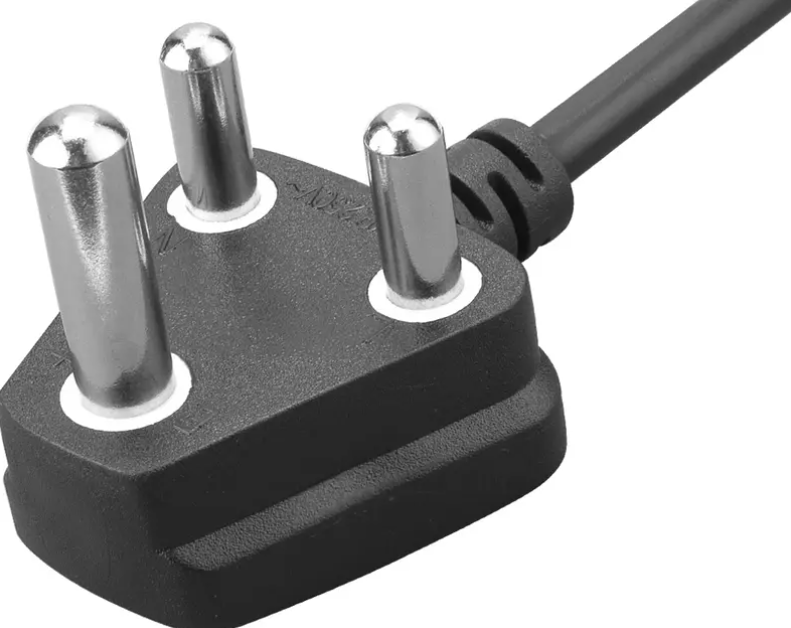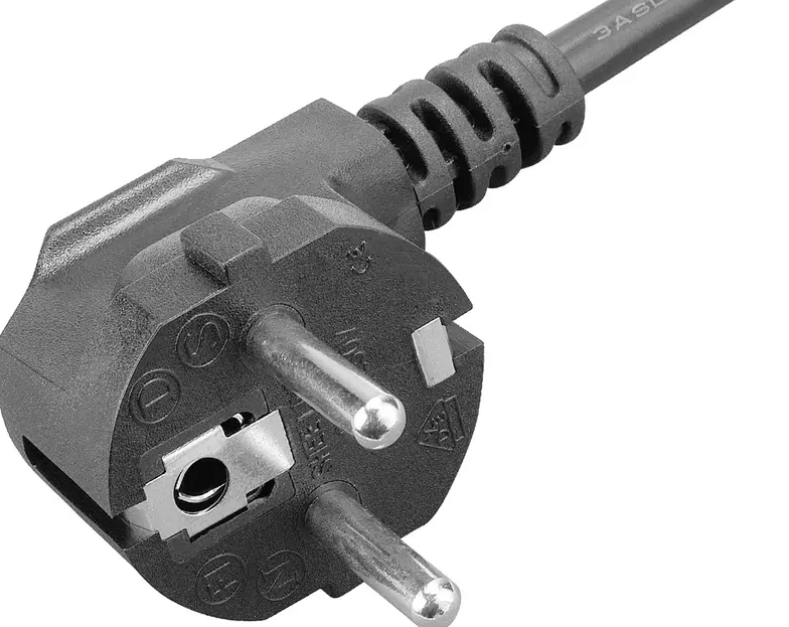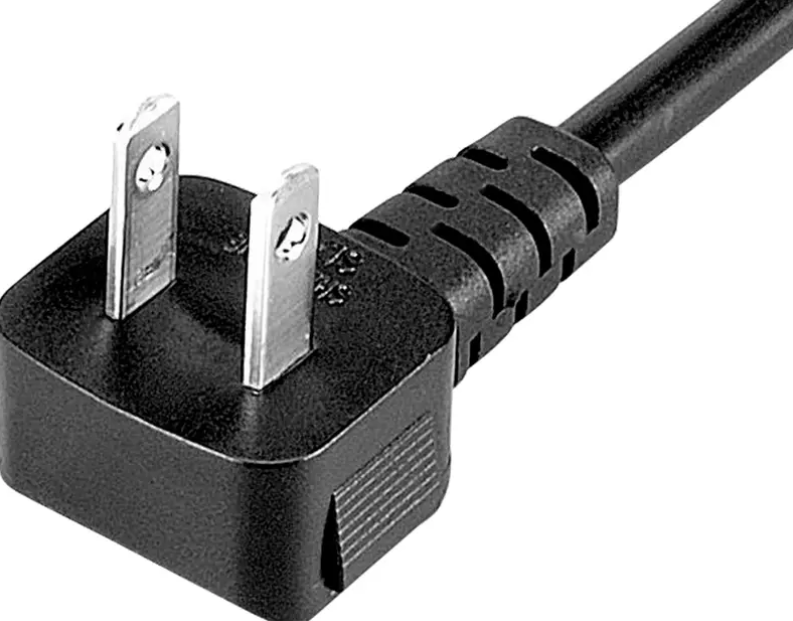- All
- Product Name
- Product Keyword
- Product Model
- Product Summary
- Product Description
- Multi Field Search
Views: 0 Author: Site Editor Publish Time: 2025-09-15 Origin: Site

Ever wondered why your devices won't plug in abroad? The international plug system varies widely, creating challenges for travelers. Understanding these differences is crucial for seamless device use worldwide. In this post, you'll learn about two-pin plugs, their global presence, and how they fit into the international plug landscape.
Two-pin plugs are among the most common international plug types worldwide. They typically feature two parallel pins and are often ungrounded, making them lightweight and easy to use. The most prevalent two-pin plugs are Type A and Type C, though variations exist depending on the region and electrical standards.
These plugs are widely accepted in many countries, especially where power outlets worldwide accommodate these designs. Understanding the distribution of two-pin plugs helps travelers and businesses select the right electrical adapters by country, ensuring compatibility and safety.
In Europe, Type C plugs dominate the landscape of two-pin plugs. Known as the Europlug, Type C features two round pins and fits into most European power outlets worldwide, except for the UK, Ireland, Cyprus, and Malta. Countries such as France, Germany, Spain, Italy, and many Eastern European nations use Type C plugs extensively, often alongside grounded variants like Type E and Type F.
Type C plugs are compatible with many European sockets, making them highly versatile for international travelers. However, some countries are gradually phasing out ungrounded sockets in favor of safer grounded options.
Asia presents a diverse picture regarding plug types worldwide. Type A plugs, with two flat parallel pins, are common in countries like Japan, the Philippines, Thailand, and parts of China. These plugs are often ungrounded and fit into power outlets designed for Type A or compatible sockets.
Type C plugs also appear in several Asian countries, including India, Nepal, Cambodia, and Vietnam. The variety of plug types worldwide in Asia means travelers often need multiple electrical adapters by country to ensure their devices work seamlessly.
In North and Central America, Type A plugs are standard. Countries such as the United States, Canada, Mexico, and many Caribbean nations rely heavily on this plug type. The American version of Type A has one wider prong for neutral, while the Japanese Type A has equal-sized prongs, allowing Japanese plugs to fit into American sockets but not always vice versa.
South America shows more variation. Countries like Brazil use a mix of plug types, including Type C and Type N (which has three pins). However, Type C remains common in parts of Bolivia, Peru, and Ecuador.
Some countries use multiple plug types, complicating the international plug landscape. For example:
● Thailand: Uses Type C, Type O (a two-pin plug with an earth pin), and Type A plugs. Most sockets are hybrid, accepting multiple plug types.
● Brazil: Employs Type N plugs but also accepts Type C plugs. It has varying voltages, so voltage compatibility is crucial.
● India: Primarily uses Type D (three-pin), but Type C plugs are also common for smaller appliances.
● South Africa: Uses Type M (three-pin) but also accepts Type C plugs for low-power devices.
These special cases highlight the importance of checking plug types worldwide and carrying suitable electrical adapters by country.
Note: When planning international travel or business operations, always verify the specific plug types and voltage requirements of your destination to ensure safe and efficient use of your electronic devices.

Type A plugs are among the most recognized two-pin international plugs by country, primarily used in North and Central America, Japan, and parts of Asia. They feature two flat, parallel pins and are typically ungrounded. A unique aspect is the difference between American and Japanese Type A plugs: American plugs have one prong wider than the other, ensuring correct polarity, while Japanese plugs have two equal-sized prongs. This design allows Japanese plugs to fit into American sockets, but not always the reverse.
The pins often have small holes near their tips. These holes engage with bumps inside some sockets, providing a firmer grip to prevent the plug from slipping out—a thoughtful feature enhancing safety and reliability. Type A plugs are rated for low current devices, making them suitable for many household electronics and chargers.
Type C plugs, commonly called the Europlug, are the most widespread two-pin plug type worldwide. They consist of two round pins, typically 4.0 to 4.8 mm in diameter, spaced 19 mm apart. This plug is ungrounded and designed for devices requiring up to 2.5 amps, such as phone chargers and small appliances.
Type C plugs fit into a wide range of power outlets worldwide, especially across continental Europe, parts of Asia, and South America. They are compatible with sockets designed for Types C, E, F, and some others, making them highly versatile for travelers. However, many countries are gradually moving to grounded plugs for enhanced safety, which may limit Type C usage in the future.
While Type A and Type C plugs are widely used, their ungrounded nature poses safety considerations. Grounding helps prevent electrical shocks by providing a path for fault currents. Devices with metal cases or higher power requirements often need grounded plugs (e.g., Types B, E, or F).
Using Type A or C plugs in sockets designed for grounded plugs may work physically but lacks grounding protection. Travelers should assess their devices' grounding needs and consider using electrical adapters by country that provide grounding where necessary.
Voltage and frequency differences also affect compatibility. For example, Type A plugs operate mainly on 100-127 V in the Americas and Japan, whereas Type C plugs are used with 220-240 V in Europe and elsewhere. Using a plug adapter alone does not convert voltage; travelers must ensure their devices support the local voltage to avoid damage.
In summary, Type A and Type C plugs represent the most common two-pin plug types worldwide, offering ease of use and broad compatibility. However, understanding their limitations and safety aspects is crucial when navigating electrical outlets worldwide.

When traveling internationally, understanding plug compatibility is crucial for seamless use of your electronic devices. Electrical outlets worldwide vary significantly, not only in plug shape but also in voltage and frequency. Using the wrong plug or adapter can lead to device damage, safety hazards, or simply an inability to connect to power outlets. Knowing the types of international plugs by country helps you prepare the right electrical adapters by country, ensuring your devices work safely and efficiently.
Two-pin plugs, such as Type A and Type C, are common worldwide but are not universally compatible without adapters. For example, a Type A plug from North America may not fit into a Type C socket common in Europe. Additionally, voltage differences—100-127 V in the Americas versus 220-240 V in Europe and Asia—mean you must confirm your device supports the local voltage to avoid damage. This is why plug compatibility matters beyond just the physical fit.
Electrical adapters by country bridge the gap between different plug types and power outlets worldwide. For travelers using two-pin plugs, adapters allow devices to connect to various socket types safely. For instance, a Type A plug can connect to a Type C socket using a simple adapter, enabling use in many European countries.
Adapters come in various forms, from simple plug converters to more advanced universal adapters that accommodate multiple plug types worldwide. When selecting an adapter, consider:
● Compatibility with both plug and socket types involved.
● Whether the adapter supports grounding if your device requires it.
● The adapter's current rating to handle your device's power needs.
Keep in mind that adapters do not convert voltage or frequency; they only enable physical connection. For devices not compatible with the local voltage, a voltage converter or transformer may be necessary.
Voltage is a critical factor when using international power plugs. Countries using two-pin plugs often operate on different voltage standards. For example:
● Type A plugs are common in countries with 100-127 V supply, such as the USA and Japan.
● Type C plugs are prevalent in regions with 220-240 V, like most European countries.
Plugging a device designed for one voltage into a different voltage without proper conversion can cause malfunction or permanent damage. Many modern electronic devices support dual voltage (e.g., 100-240 V), but it's essential to verify this before traveling.
Frequency differences (50 Hz vs. 60 Hz) may also affect some devices, though many modern electronics are designed to handle both. Always check your device specifications and consult the list of international power plugs by country to prepare accordingly.
Tip: Always carry a reliable electrical adapter set that covers the two-pin plug types you'll encounter, and verify your devices support the local voltage to ensure safe and hassle-free use abroad.
Two-pin plugs, such as Type A and Type C, are designed for simplicity. Their compact, lightweight structure makes them easy to carry and handle, especially for travelers. Unlike bulkier grounded plugs, two-pin plugs fit snugly into most compatible electrical outlets worldwide without requiring much force. This ease of use reduces the hassle of connecting devices and minimizes wear on both plugs and sockets.
For businesses dealing with international shipments or equipment, the portability of two-pin plugs translates to lower shipping weights and fewer compatibility issues. Many small appliances and chargers use these plugs, making them a practical choice for everyday devices.
One of the most significant benefits of two-pin plugs is their broad compatibility across power outlets worldwide. Type C plugs, known as Europlugs, fit into various socket types, including E, F, J, K, and N, covering much of Europe, parts of Asia, and South America. Similarly, Type A plugs are standard in North and Central America and parts of Asia.
This versatility means travelers often need fewer electrical adapters by country when carrying devices with two-pin plugs. It also simplifies the design of universal adapters, which frequently accommodate these plug types. The widespread acceptance of two-pin plugs in many countries eases the challenge of matching plug types worldwide.
Using two-pin plugs can be cost-effective for travelers and businesses alike. Since these plugs are simpler in design and do not include grounding components, they are generally less expensive to manufacture and purchase. Travelers can save money by investing in fewer specialized adapters or converters.
Additionally, because two-pin plugs are compatible with many sockets worldwide, travelers may avoid buying multiple adapters for different destinations. This reduces the overall cost and complexity of preparing for international trips. For companies, standardizing on two-pin plugs for low-power devices can lower production and inventory costs.
Tip: When selecting electrical adapters by country, prioritize those compatible with two-pin plugs to maximize convenience and reduce travel expenses.

Two-pin plugs, such as Type A and Type C, are typically ungrounded. This means they lack the third pin that provides a grounding path to prevent electric shocks in case of a fault. While their design suits low-power devices and offers ease of use, the absence of grounding raises safety concerns, especially for appliances with metal casings or those that draw higher currents.
In many countries, electrical outlets worldwide are evolving to prioritize grounded sockets to enhance user safety. Using two-pin plugs in ungrounded outlets or in sockets designed for grounded plugs may expose users to potential electric shock risks. For businesses and travelers, understanding these safety limitations is crucial when selecting electrical adapters by country and ensuring device protection.
Due to their simple design, two-pin plugs often experience more wear over time, especially when frequently inserted and removed from power outlets worldwide. The lack of grounding pins means the entire electrical connection relies on just two contact points, which can become loose or corroded.
Repeated use can cause the pins to bend or the plug housing to crack, increasing the risk of poor contact or electrical arcing. This wear and tear can compromise the reliability of the plug and the safety of connected devices. Regular inspection and replacement of worn two-pin plugs or adapters are advisable, particularly for frequent travelers and businesses managing international equipment.
Two-pin plugs generally support lower current ratings compared to grounded plugs. For instance, Type C plugs are usually rated for up to 2.5 amps, suitable for small appliances and chargers but not for high-power devices. Type A plugs commonly support up to 15 amps, but their ungrounded nature still limits their use with certain equipment.
This limitation restricts the range of devices that can safely use two-pin plugs worldwide. Devices requiring higher power or grounding protection, such as kitchen appliances, heaters, or computers, often mandate the use of grounded plugs like Type B, E, or F. When planning to use two-pin plugs internationally, checking the power requirements and voltage compatibility is essential to avoid overloading sockets or damaging devices.
Two-pin plugs, particularly Type A and Type C, are prevalent in many countries. They offer ease of use and compatibility across various sockets worldwide. Travelers should consider voltage compatibility and safety when using these plugs internationally. As global standards evolve, grounded plugs may become more common, impacting the use of ungrounded options. Sheeline provides reliable electrical adapters that cater to diverse plug types, ensuring safe and efficient device use for international travelers and businesses.
A: Countries using two-pin plugs as standard international plugs include the United States, Canada, Japan, and many European nations like France and Germany. These plugs are among the most common electrical outlets worldwide, with Type A and Type C being prevalent in these regions.
A: To determine if you need electrical adapters by country for two-pin plugs, check the plug type and voltage requirements of your destination. Countries may use different plug types worldwide, so an adapter ensures compatibility with local power outlets.
A: Two-pin plugs are lightweight, easy to use, and widely compatible with power outlets worldwide. Their simple design makes them cost-effective and suitable for many low-power devices, reducing the need for multiple adapters.
A: While two-pin plugs are compatible with many power outlets worldwide, they are ungrounded, posing safety concerns for high-power devices. Always check if your device requires grounding and use appropriate adapters to ensure safety.
A: Some countries have multiple plug types worldwide due to historical infrastructure, regional variations, and evolving safety standards. This diversity necessitates checking international power plugs by country and using suitable adapters for device compatibility.
Blog
